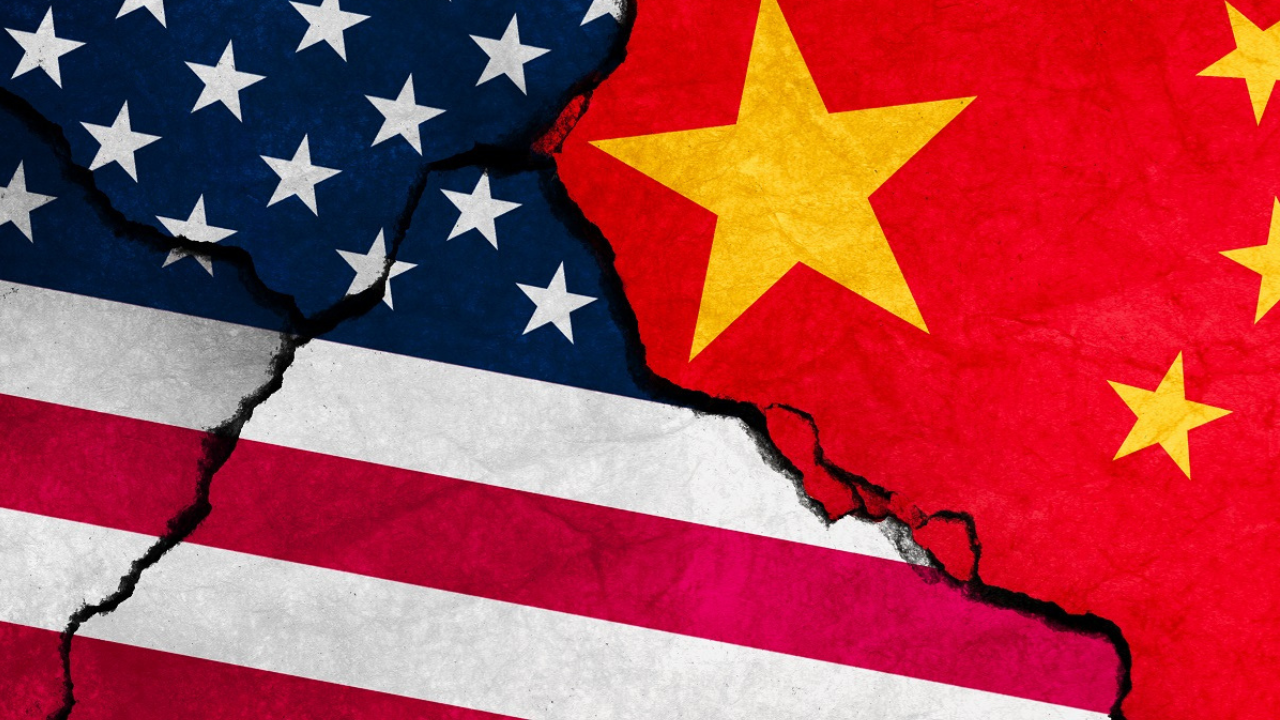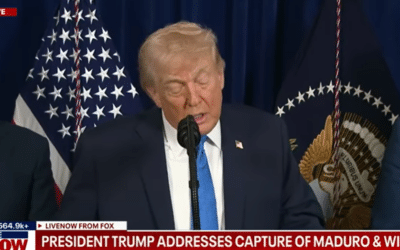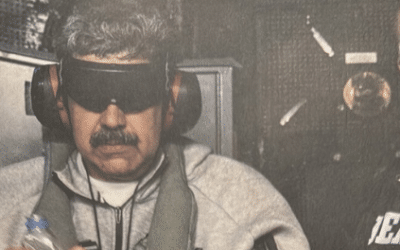A recent report by the Stockholm International Peace Research Institute (SIPRI) says China is undertaking a “significant” expansion and modernization of its nuclear arsenal and predicts Beijing could be on pace to obtain in 2030 an equal number of intercontinental ballistic missiles (ICBMS) as Russia or the US. China’s actions are doubtless a response to the destabilization engendered by Washington’s new Cold Wars as well as the concomitant nuclear arms race successive American presidents have spearheaded this century.
The International Campaign to Abolish Nuclear Weapons (ICAN) says combined total spending on nuclear arsenals last year rose by $10.7 billion to $91.4 billion. Washington accounted for at least 80% of this rise in expenditures with a budget of $51.5 billion, spending more than all other nuclear-armed states combined. China and Russia lag behind the United States, in second and third place, with budgets of $11.8 billion and $8.3 billion respectively.
Former President Barack Obama set in motion a “modernization” program for the entire US nuclear triad which will cost more than $1 trillion over the next 30 years. The gargantuan policy demands a plethora of new long-range bombers, nuclear submarines, cruise missiles, and ICBMs.
The latest annual SIPRI report finds that Beijing’s arsenal has reached a new total of 500 warheads as of January, representing an increase of some 90 warheads since last year. However, the watchdog group warns of the influence of Pentagon assessments even regarding its own studies.
“SIPRI’s estimate of 500 warheads relies on publicly available information on the Chinese nuclear arsenal. Since China has never declared the size of its nuclear arsenal, many of the assessments here rely on data from the US Department of Defense (DOD) and must therefore be treated with caution. For example, in its 2023 report to the US Congress on Chinese military and security developments, the US DOD projected that China might field a stockpile of roughly 1000 warheads by 2030. This projection relies, however, on several assumptions about China’s future force posture and plutonium production; it remains to be seen how accurate they are.” SIPRI’s sample chapter on world nuclear forces reads.
Washington Post reports this “expansion of China’s capabilities came as SIPRI warned that even as the total number of nuclear warheads around the world was declining as Cold War-era weapons were phased out, there were steady year-on-year increases in the number of operational warheads that could be used quickly in the event of conflict.”
SIPRI’s analysis highlights that although virtually all of the 2,100 deployed nuclear weapons on ballistic missiles in a state of “high operational alert” belong to the United States or Russia, Beijing is now “believed to have placed some warheads on this level of alert for the first time.”
These numbers could notably increase soon as NATO Secretary General Stoltenberg recently told the Telegraph the bloc is considering pulling a considerable number of nuclear warheads out of storage and placing them on standby. “I won’t go into operational details about how many nuclear warheads should be operational and which should be stored, but we need to consult on these issues. That’s exactly what we’re doing,” Stoltenberg said.
The previously mentioned projections regarding the future size of China’s nuclear weapons stockpile, assuming current growth rates continue, suggests Beijing could muster more than 700 warheads by 2027 and roughly 1,000 by the decade’s end. The Post clarifies that this “2030 estimate would still be less than a fifth of the current size of the U.S. inventory, which, according to the SIPRI report, was 5,044 warheads as of January. Russia has 5,580, according to the report.” SIPRI’s report shows that Washington and Moscow’s arsenals comprise 90% of the global nuclear weapons supply.
Tong Zhao, a senior fellow with the Nuclear Policy Program and Carnegie China at the Carnegie Endowment for International Peace, told the Post “Personally, I don’t think China has made the decision to reach nuclear parity with the United States.” He continued, “But I understand that many American experts already assume nuclear parity is the goal of the Chinese expansion.” Zhao is unaffiliated with the SIPRI research.
For many years, China maintained an arsenal of about 200 nuclear weapons and denies any substantial buildup. Nevertheless, Hans Kristensen, associate senior fellow with SIPRI’s Weapons of Mass Destruction Program, stated Beijing is now growing its stockpile at a rate higher than any other nuclear-armed state. “But in nearly all of the nuclear-armed states there are either plans or a significant push to increase nuclear forces,” he emphasized.
The proxy war against Russia in Ukraine launched and sustained by the US as well as NATO, the Washington-led military bloc, has had a “negative impact” on arms control talks and “diminished opportunities to break the long-standing deadlock in nuclear arms control and reverse the worrisome trend of nuclear-armed states developing and deploying new weapon systems,” SIPRI’s report laments.
This comes after the George W. Bush and Donald Trump administrations stoked tensions by tearing up critical pillars of global arms control, unilaterally exiting the Anti-Ballistic Missile (ABM) Treaty, the Intermediate Nuclear Forces (INF) Treaty, and the Open Skies treaty. Trump’s White House was all set to leave the New Start Treaty, the last arms control pact between the two top nuclear superpowers which in 2021 Presidents Joe Biden and Vladimir Putin extended for a period of five years. But that too no longer functions since Moscow exited the agreement following NATO’s war in Ukraine.
Along with Israel’s US-backed war on the Palestinians in the besieged Gaza Strip, the impacts of the Ukraine conflict can be felt across “almost every aspect” of armaments and international security related issues, the watchdog found.
Founding NATO member France is leading the charge advocating the North Atlantic alliance deploy military advisers in Ukraine to train Kiev’s troops and lift restrictions on NATO supplied weapons being used to target the Russian mainland, while concurrently engaging in a massive upgrade of its own nuclear arsenal.
ICAN finds Paris is undertaking a “massive multi-year nuclear weapons upgrade,” spending €300 million ($322 million) more than last year. France’s total spending amounts to about €5.3 billion ($5.7 million) in 2023 alone, “more than [$10,738] per minute,” Alicia Sanders-Zakre, co-author of the 85-page report Surge: 2023 Global Nuclear Weapons Spending, told Radio France Internationale.
“[France] can launch nuclear weapons by aircraft as well as by submarine and is investing billions in developing more sophisticated systems to be able to launch them,” she said. Adding, obviously the French government “didn’t listen to calls from some major cities, including Paris, to join the Treaty on the Prohibition of Nuclear Weapons.”
London, another NATO founding member, is also surging its nuclear weapons spending. As DeClassified UK details, Prime Minister “Rishi Sunak’s government is putting 12 percent of defense expenditure – equivalent to £12,000 [$15,253] every minute – towards the UK’s arsenal of at least 225 warheads. Sunak increased spending on nuclear weapons last year by 17 per cent to £6.5 billion [$8.26 billion] – a greater increase than any other nuclear power except the US. Over the last five years UK expenditure rose by a staggering 43 per cent.”
China’s recent actions towards increased nuclear weapons development take place in an unstable international security system defined by the new Cold Wars Washington along with its allies have launched against both Beijing and Moscow during the last several decades.
In 2011, Obama launched the “pivot to Asia,” the largest military buildup since the Second World War targeting Beijing and shifting two-thirds of all US Naval and Air forces to Asia-Pacific encircling China with hundreds of bases and preparing for a future direct war.
Since then, Trump and Biden have vastly escalated the American military footprint in the South China Sea, tossed out the Strategic Ambiguity policy regarding the island of Taiwan in favor of pursuing a war footing, signed the AUKUS military pact with Australia and Britain to flood the region with nuclear submarines, deployed troops to Taiwan and Kinmen Island, repeatedly sailed aircraft carrier strike groups and launched wargames in China’s backyard, traversed warships across the sensitive Taiwan strait, and lavished Taipei with billions in military aid.
The current trajectory among nuclear powers is largely the responsibility of Washington’s hawkish bipartisan establishment which was dead set on reigniting the Cold War following the fall of the Soviet Union and China’s economic liberalization.
As the Libertarian Institute’s Kyle Anzalone and Will Porter have documented,
Following Bush Jr.’s termination of the ABM deal in 2002—wrecking a pact which placed limits on Russian and American missile defense systems to maintain the balance of mutually assured destruction – Russia soon resumed funding for a number of strategic weapons projects, including its hypersonic missile. In his announcement of the new technology in 2018, Putin deemed the move a response to Washington’s unilateral withdrawal from ABM, which also saw the U.S. develop new weapons.
Though he inked New START and campaigned on vows to pursue an end to the bomb, President Obama also helped to advance the arms build-up, embarking on a 30-year nuclear modernization project set to cost taxpayers $1.5 trillion. The Trump administration has embraced the initiative with open arms, even adding to it, as Moscow follows suit with upgrades to its own arsenal.
Moreover, Trump has opened a whole new battlefield with the creation of the US Space Force, escalated military deployments, ramped up war games targeting Russia and China and looked to reopen and expand Cold War-era bases.
The Biden White House picked up where Trump left off and the “Great Power Competition” so-called National Defense Strategy has taken humanity closer to the brink of nuclear war, according to the Bulletin of Atomic Scientists, than at any point during the previous Cold War including the Cuban Missile Crisis.
In November 2022, a month before his retirement, former Navy Admiral Charles Richard, then head of Strategic Command which oversees American nuclear forces, ominously warned the “Ukraine crisis that we’re in right now, this is just the warmup…The big one is coming. And it isn’t going to be very long before we’re going to get tested in ways that we haven’t been tested [in] a long time.” Unmistakably, the “big one” is the coming war with China.
This article was originally featured at Antiwar.com and is republished with permission.
































